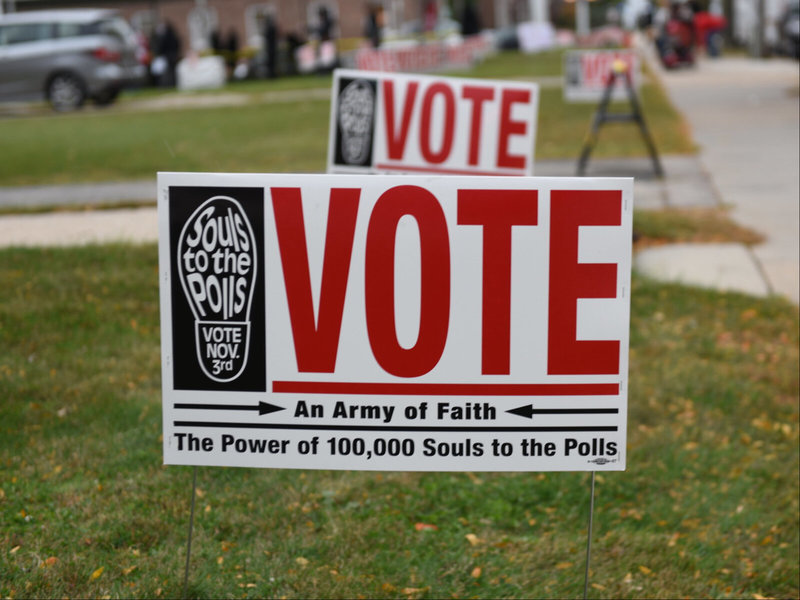The numbers are in, the losers are licking their wounds and we can now get on with our lives – at least until just two presidential candidates are left in the race.
Television will return to advertising drugs and weight-loss programs and health and beauty products, which means we will have ads that are probably closer to the truth than the ones we have been watching.
There is no way to cover all that these elections mean, but there are some elections whose meanings go beyond numbers.
Milwaukee County Executive
Chris Abele proved that being loved by nobody but liked and respected by almost everybody is both unusual and a path to victory.
Abele has always been a Democrat, but he has pledged that he will always work with both sides of the political spectrum to get things done.
He angered Republicans when he was so supportive of gay marriage that, when the bill passed, he paid with his own money to keep the courthouse open so that couples could be married the day the bill became law. Democrats loved him. Then he turned around and worked with Gov. Scott Walker to put together the financing package for the new Bucks arena. And he accepted his role as a school improvement force for Milwaukee Public Schools. Then Democrats hated him for that.
Sure, Abele spent a small fortune to get elected – about $4 million. It seems like a ridiculous sum, and his opponent, liberal Democrat Chris Larson, complained about it. Money obviously played a role in the election.
But a bigger factor, most likely, was the sense that Abele has been a stabilizing force as the head of county government. He’s drastically improved the financial position, he’s settled down the park system and he has led on some issues that normally aren’t front-burner issues, including mental health care and solving the problem of homelessness.
In addition, he has succeeded in performing one of the most significant local government moves in recent history: reducing the meddling county board to a mere shadow of its former self.
Traditionally this board, like most similar units of government, is 17 people who dig down into the minutia of issues. They meddle and frustrate progress and, while the whole thing about checks and balances is a nice idea, the way this board has worked in recent years is just to act as an obstruction to good ideas. Long on platitudes, short on governance.
So the board has been reduced to part-time positions, terms have gone from four to two years and salaries have been cut in half. Most observers think these moves are going to be major factors in improved county government.
Milwaukee Mayor
One of the grumblings you hear all the time about Tom Barrett is that he is not an activist mayor that rallies troops to solve the problems in his city.
And yet the guy got 70 percent of the vote against Ald. Bob Donovan, who had appealed to a small subset of Milwaukee voters.
Barrett is not a flashy mayor, but he is a man with a concrete vision for Milwaukee who is influential enough to get things done. And while he is optimistic about the city, he is clear on the challenges that lay ahead. He says he knows major issues remain about public safety and racial inequalities in Milwaukee. He recognizes problems and works, often behind the scenes, to build coalitions to attack and solve issues.
He also has vision and toughness, displayed by his support for the Downtown Streetcar. There was a huge outcry of opposition to the transportation system, but Barrett remained steadfast and it’s a victory he has achieved.
Barrett, with his loyal and skilled chief of staff Pat Curley, has a good relationship with the Common Council. The almost continual battles that exist in the county are rare in city government.
When he finishes this term, Barrett will become the second-longest-tenured mayor in the city since 1940, when the honorable Daniel Hoan left office.
Big turnout?
Finally, nearly 50 percent of all voting-aged Wisconsinites went to the polls (52 percent in Milwaukee, up from a more typical 38 percent).
Half the people voted, and it was the highest total for a presidential primary since 1982. Election officials and academics are going around explaining how it was that so many people stormed to the polls.
What’s missing, once again, are answers as to why the other half didn’t bother to show up.
With a history in Milwaukee stretching back decades, Dave tries to bring a unique perspective to his writing, whether it's sports, politics, theater or any other issue.
He's seen Milwaukee grow, suffer pangs of growth, strive for success and has been involved in many efforts to both shape and re-shape the city. He's a happy man, now that he's quit playing golf, and enjoys music, his children and grandchildren and the myriad of sports in this state. He loves great food and hates bullies and people who think they are smarter than everyone else.
This whole Internet thing continues to baffle him, but he's willing to play the game as long as OnMilwaukee.com keeps lending him a helping hand. He is constantly amazed that just a few dedicated people can provide so much news and information to a hungry public.
Despite some opinions to the contrary, Dave likes most stuff. But he is a skeptic who constantly wonders about the world around him. So many questions, so few answers.





